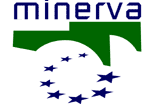Handbook for quality in cultural Web sites
Improving quality for citizens
Table of contents
1.1 Definitions
1.1.1 Cultural Entity (CE)
1.1.1.1 Identity
1.1.1.2 Categories
1.1.1.3 Goals
1.1.2 Cultural Web Application (CWA)
1.1.2.1 Goals
1.1.3 Users
1.1.3.1 User Needs
1.2 Fundamentals
1.2.1 Promote a widespread diffusion of culture
1.2.2 Exploit the effectiveness of new means of communication
1.2.3 Adopt an intelligent use of the Web
1.2.4 Conceive quality as the result of interaction
among cultural entities and users
1.3 Policies and strategy: some recommendations
1.3.1 Portals and cultural networks
1.3.2 Recognisability and visibility of the quality-evaluation
1.3.3 Co-ordination of internal and external information
flow
1.3.4 Cross-over between various channels of communication
1.3.5 Planning, development and management of a Cultural
Web Application
1.3.6 Respect of Copyright (IPR) and privacy in contents
1.3.7 Long-term preservation of Web contents
2.1 Introduction
2.2 Accessibility of contents
2.2.1 Disability
2.2.2 How do disabled people use the Web?
2.2.3 The Web Accessibility Initiative (WAI)
2.2.4 Indications of the European Union
2.3 Usability
2.3.1 Definition and methodology
2.3.2 Principles of Usability
2.4 Criteria of Usability for Cultural Web Applications (CWA)
2.4.1 Make contents perceivable
2.4.2 Recognise that the site is a Cultural Web Application
2.4.3 Recognise the aims of the site
2.4.4 Gain a general impression of the site before
proceeding to a detailed visit.
2.4.5 Be able to exploit quality contents
2.4.6 Presentation of Contents
2.4.6.1 Functional layout
2.4.6.2 Functional graphic
elements
2.4.6.3 Functional multimedia
elements
2.4.7 Site Navigation
2.4.8 Searching
2.5 Patterns and the language of Patterns
2.5.1 Definitions
2.5.2. The Catalogue of Patterns
2.5.3 How to consult Patterns
2.5.4 An example of the use of the Catalogue of Patterns
3.1 Considerations
3.2 Goals of the Cultural Web Application: definitions
3.2.1 Presentation of the identity of the Cultural
Entity
3.2.2 Transparency on the activities of the Cultural
Entity
3.2.3 Transparency on the mission of the Cultural
Web Application
3.2.4 Efficiency in the sector networks
3.2.5 Presentation of standards and regulations of
the sector
3.2.6 Spreading of cultural content
3.2.7 Support of cultural tourism
3.2.8 Offer of educational services
3.2.9 Offer of services of scientific research
3.2.10 Offer of services to specialists in the sector
3.2.11 Offer of services of reservation and acquisition
of goods
3.2.12 Promotion of Web communities in the sector
3.3 Specific description of the Cultural Web Application according
to Cultural Entity categories
3.3.1 Archives
3.3.2 Libraries
3.3.3 Cultural heritage diffused on territory
3.3.4 Museums
3.3.5 Institutes for administration and safeguarding
3.3.6 Centres for research and education
3.3.7 Cultural projects
3.3.8 Temporary exhibitions
Appendices
Appendix 3. How to use the Handbook? Tables of examples
- Example # 1 - Planning the Website
of an Archive
- Example # 2 - Planning the Website
of a Library
- Example # 3 - Planning the Website
of a Museum
- Foreword (Definition and goals, Structure and criteria, Methodology
and sources, Critical remarks)
- European rules
- Member States rules
- Austria
- Belgium
- Denmark
- Finland
- France
- Germany
- Greece
- Ireland
- Italy
- Luxembourg
- The Netherlands
- Portugal
- Spain
- Sweden
- United Kingdom
- International documents
|


